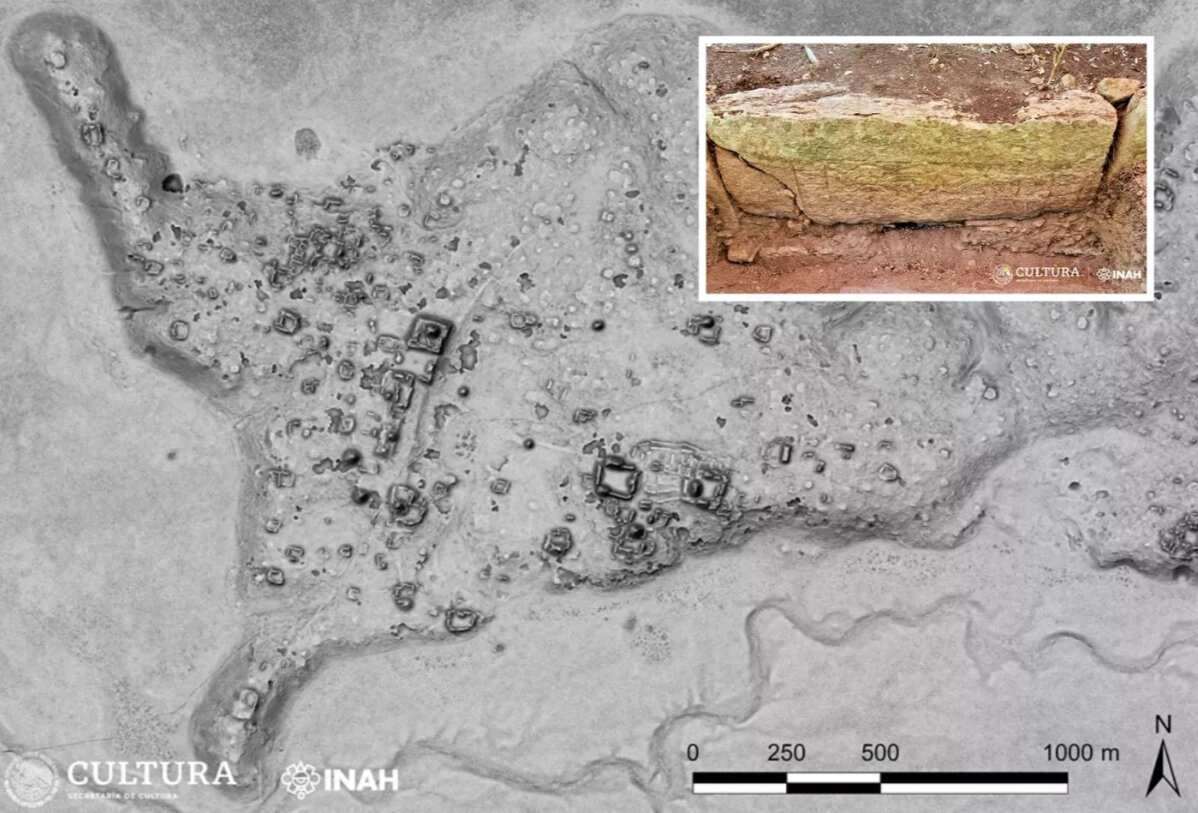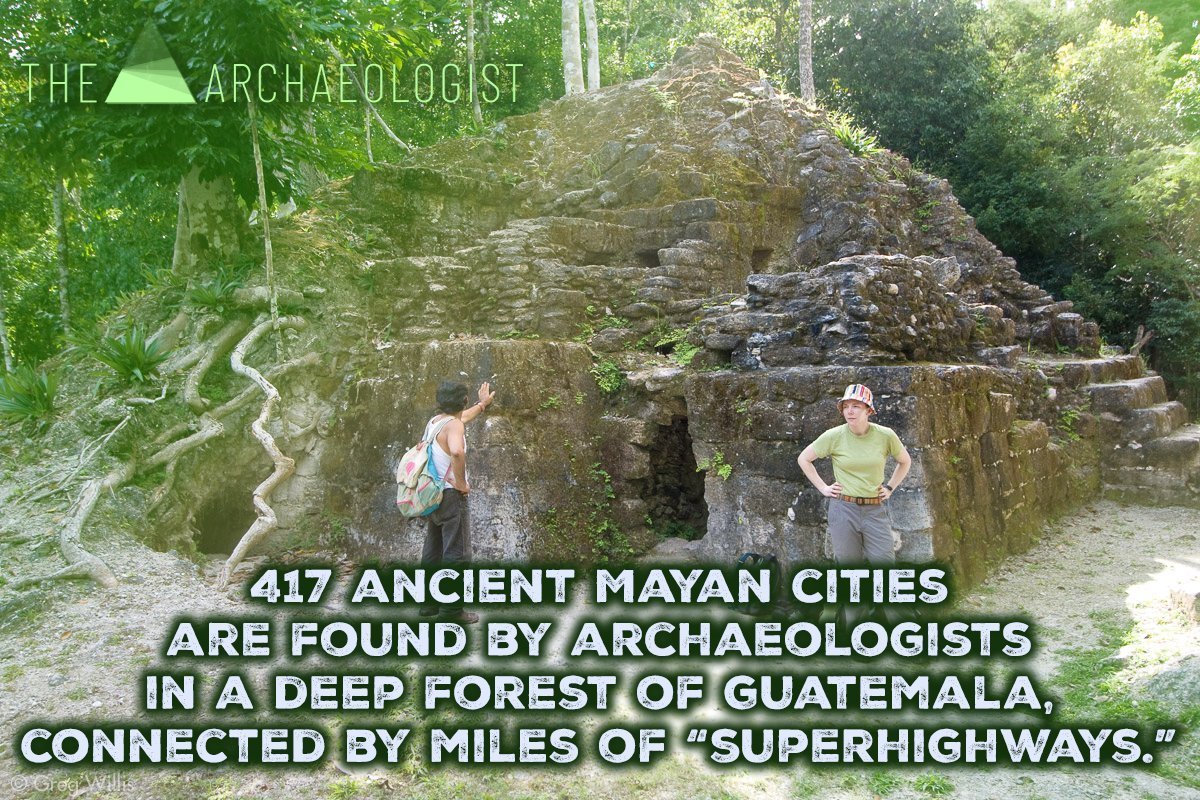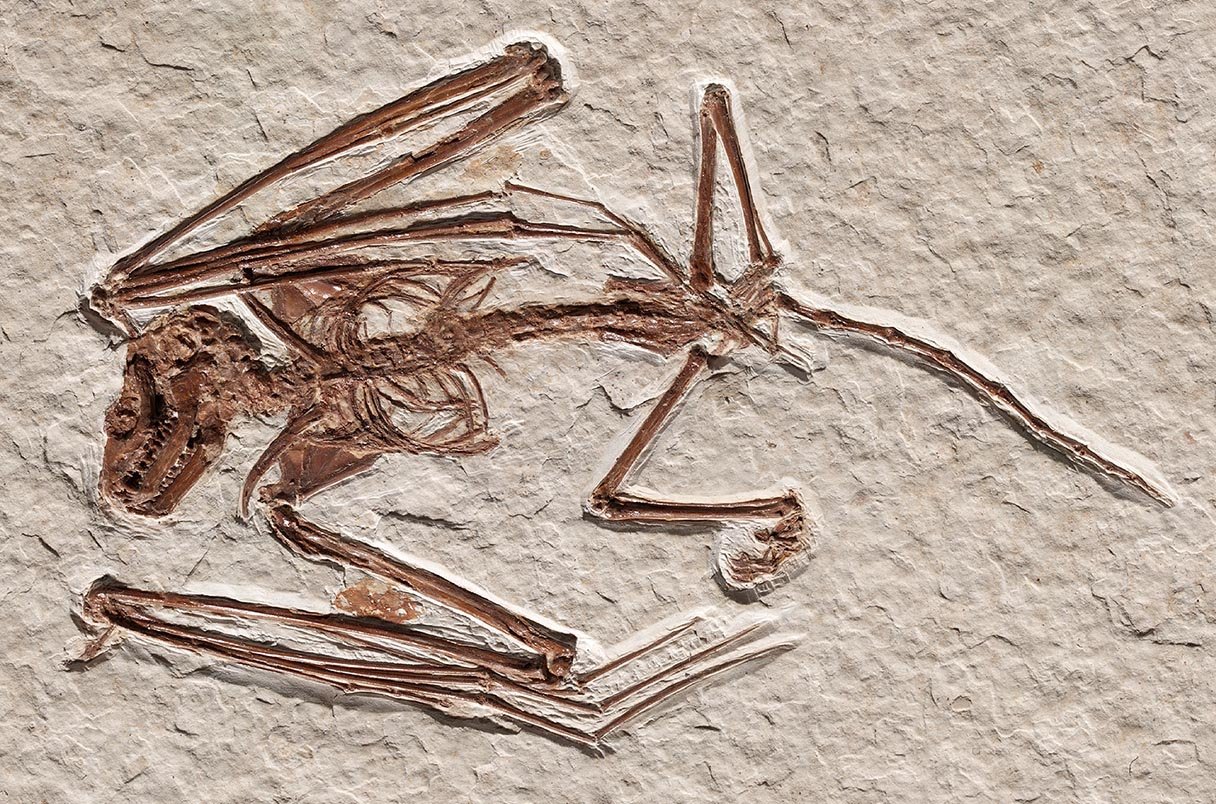In the following video we will analyze Francis Drake explorations all around the world. Enjoy!
How Did Buddha React to a Prostitute? (Buddha and Ananda Story)
In the video below we will narate a Buddha and Ananda story. Watch the video to find out more!
Plate Movement: 200 Million Years Ago to Present Day
Today’s configuration of continents is dramatically different than it was in the past. See how plate tectonics built and fragmented supercontinents—land masses made of multiple continents merged together—over the past 200 million years.
For more on earthquakes—why they happen, how they’ve shaped the Bay Area, and what you can do to prepare for future events—visit calacademy.org/earthquakes.
The Mythical Creatures of Arabia
In this video we will dive into the world of Middle eastern folklore and talk about some of the mythical creatures that we can find in places like the Arabian Nights. Enjoy!
Trojan War Family Tree | Main Characters from The Iliad Explained
In the following video we will be explaining the family tree of the main characters of Iliad. Enjoy!
The Lost Labyrinth of Egypt is Kept Hidden by their Government
In this video Ben Van Kerkwyk will explain how Egypt's Lost Labyrinth has recently been discovered. However, the public doesn't know this - because the Egyptian government is trying to keep things quiet. What reason do they have to keep the Lost Labyrinth hidden?
Ashoka the Great - Rise of the Mauryan Empire Documentary
The Third Century BC was a notoriously violent time, filled with titanic clashes and amazing personalities. Alexander’s conquests gave way to a period of constant warfare amongst his Seleucid, Ptolemaic and Antigonid successors, while the rising Roman juggernaut began a series of conquests to unite the Italian Peninsula, and fought its Carthaginian Rival, paving the way for future dominance. India during this period was also experiencing revolutionary change, which culminated in the rise of the Mauryan Empire and the reign of Ashoka the Great.
The Bible Theory Iceberg Explained
In the following video we will be explaining the Bible theory iceberg. Watch the video to find out more!
3 Most Cursed Objects That Even The Vatican Fears
Today, we take a look at these 3 most cursed objects that the Vatican fears.
Something that looks so old and cryptic that it gives you a bizarre feeling. It could be something your grandparents passed down to you, or something you have seen in a museum. Many old objects can exude a mystifying aura but when an object causes one to lose their life, it transforms from mystifying to chilling.
Amazing Mat Tents of North Ethiopia - Danakil Desert Dwellers
The hottest place on Earth is the home to the mat tents of the Afar people. These may represent the earliest mobile architecture in the world.
Why Europe Is Insanely Well Designed
In today’s video we will be explaining why Europe is insanely well designed. Watch the video to find out more!
AP Photo/Domenico Stinellis
The square where Julius Caesar was assassinated is now open to the public
The Curia of Pompey, where Caesar was fatally wounded on the Ides of March, is still standing in this plaza. It served as a senators' gathering place.
Tuesday marked the official opening of a historic square where historians think Julius Caesar was fatally stabbed in one of history's most notorious killings.
A lowered boardwalk now allows visitors to get a close-up view of the Holy Area of Largo Argentina, which is home to the ruins of four ancient temples in a busy area of downtown Rome, for 5 euros ($5.50).
Moreover, the location is home to the ruins of the Curia of Pompey, where Caesar is thought to have been stabbed to death on March 15 (the Ides of March) in 44 B.C.
The location had been occupied by buildings since antiquity, and it wasn't until 1926 when those structures were torn down that it was rediscovered. Mussolini inaugurated it as a significant historical landmark three years later.
The numerous archaeological finds made at the location throughout the years are also documented in two new exhibition rooms.
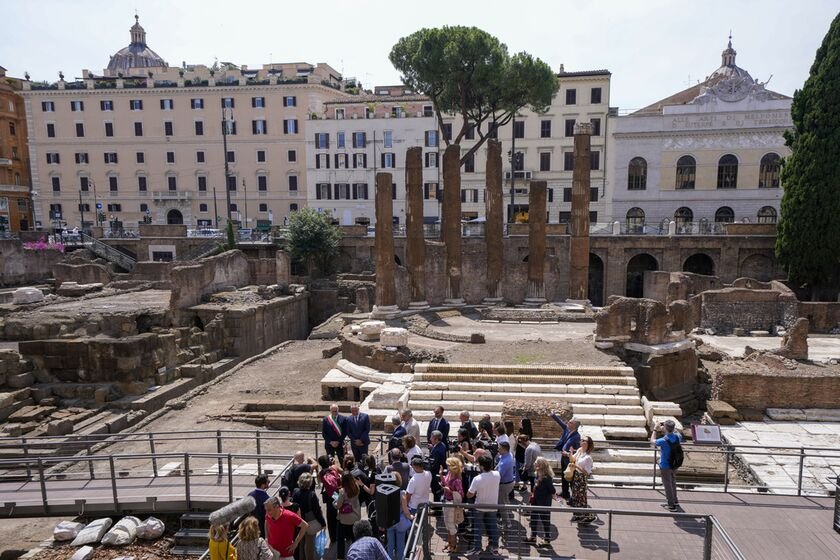
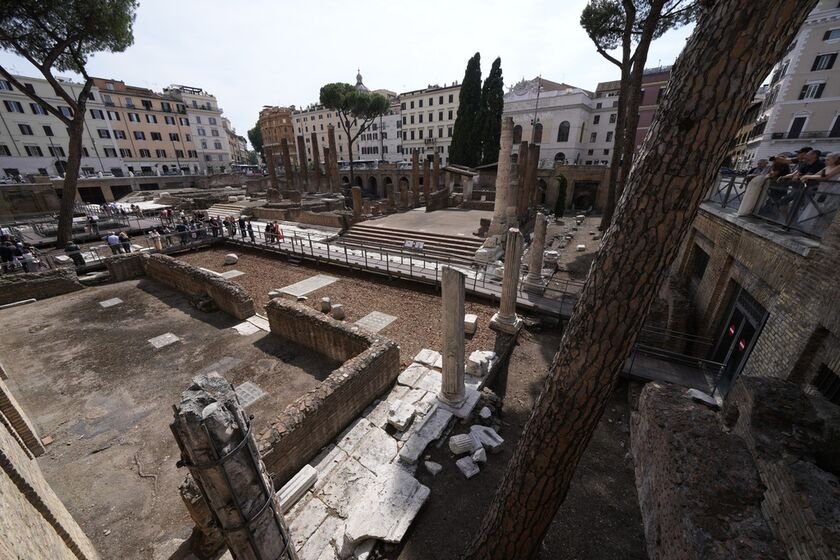
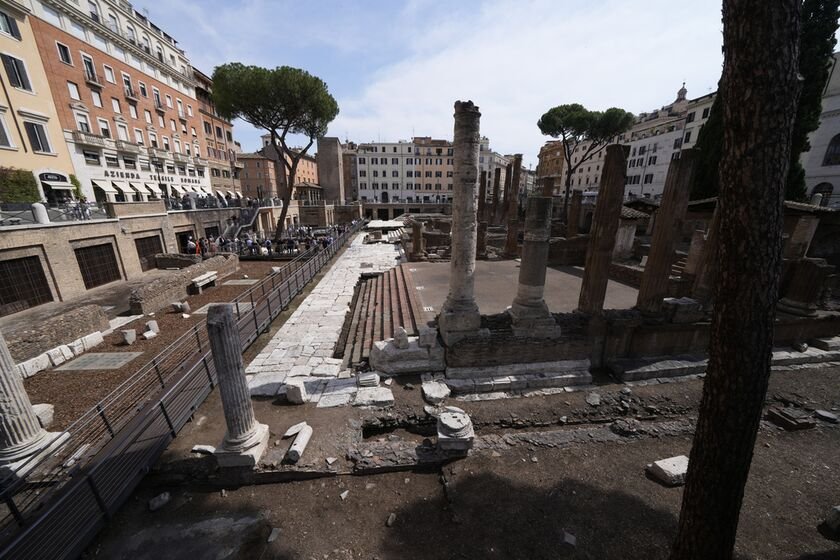
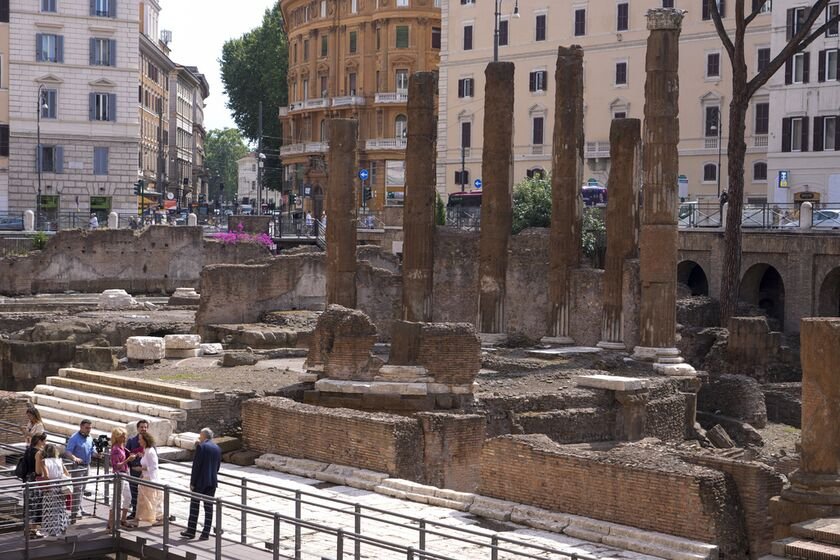
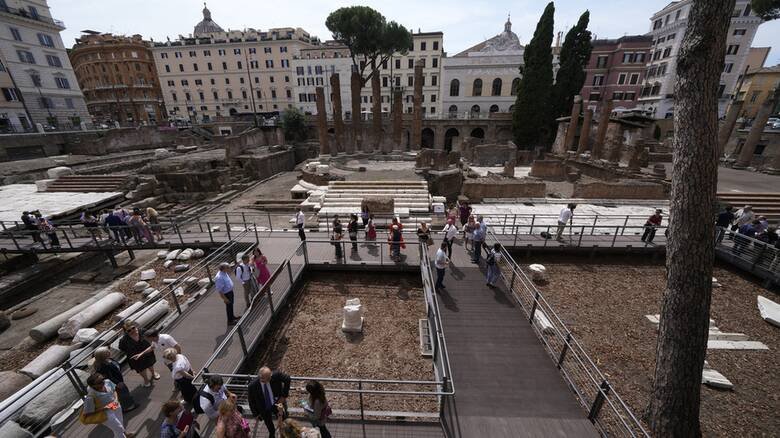
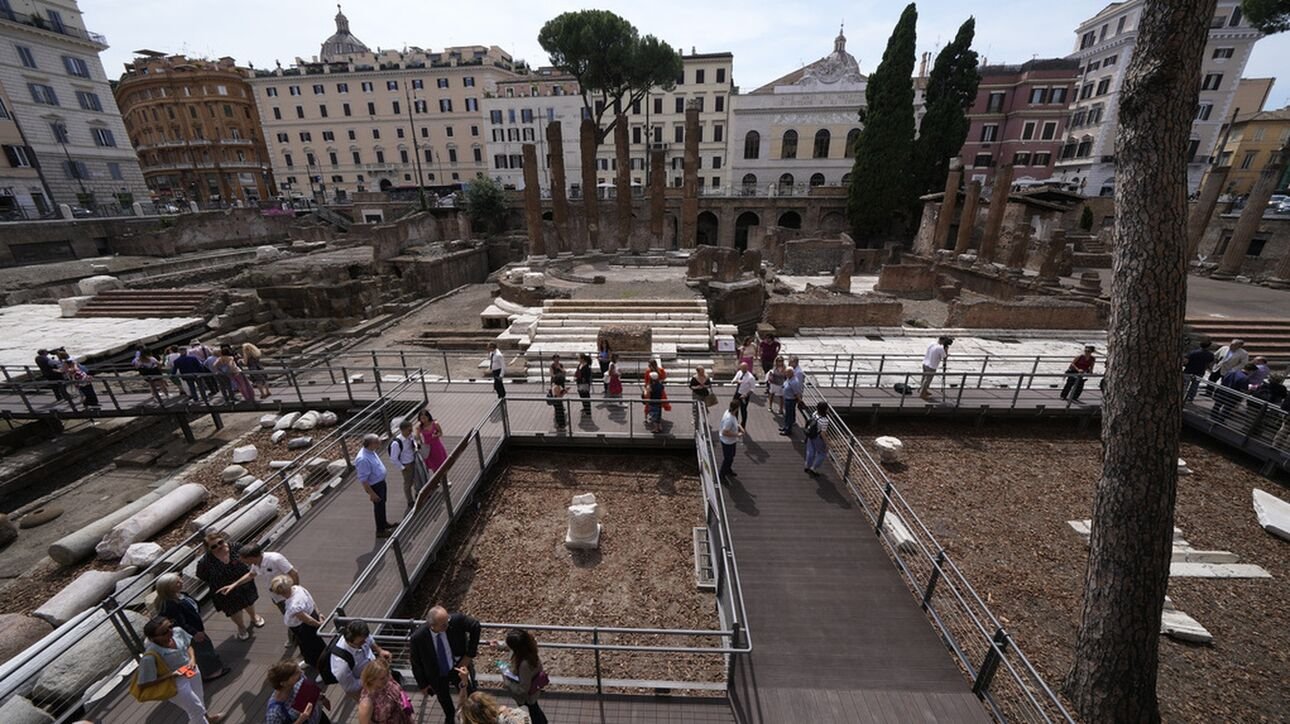
Early in the third century, work began on what is known as Temple C, a building of significance on the site that was apparently erected in honor of the Roman goddess Feronia.
Most of the earlier structures were destroyed by fire in 111 B.C. and 80 A.D., and their remnants were buried beneath a new floor constructed in the first century by the emperor Domitian.
Even if its specifics and broader ramifications are still being discussed, Caesar's death has persisted in Western culture as one of the most seismic political events in history.
There is agreement that Brutus and a number of Roman senators had grown worried about Caesar's growing strength and influence as well as his undermining of the Republic.
Caesar's murder, however, sparked a period of retaliation and civil war that claimed thousands of lives and effectively ended the Republic. In 27 B.C., Octavian, who had been named as his successor and was then known as Augustus, his adopted 18-year-old son, became what is recognized as Rome's first emperor.
Many significant sites have not yet been investigated, and thousands of artifacts have been discovered that have never been displayed in public due to Italy's immense abundance of archaeological treasures.
As additional artifacts are discovered, historians' understanding of ancient Rome continues to change. In May, archaeologists described how people were killed in an earthquake brought on by the massive eruption of Vesuvius in A.D. 79. In April, a new study shed light on the usage of Roman vineyards in theatrical rituals.
How a basement remodeling project led to the discovery of The Derinkuyu Subterranean City
A basement remodeling effort in 1963 produced the archeological find of a lifetime: the 20,000-person Derinkuyu Subterranean City.
In the Turkish village of Derinkuyu, a guy who took a sledgehammer to a basement wall got more home remodeling than he anticipated. He discovered a tunnel behind the wall. More tunnels followed, eventually connecting a huge number of halls and chambers. It was a sizable underground structure that had been deserted by its residents before the fateful stroke of the hammer.
The unidentified Turk, whose name is not mentioned in the paper, had discovered a gigantic underground city that was up to 18 floors tall, 280 feet (76 meters) deep, and big enough to house 20,000 people. Who constructed it, and why? Who abandoned it, when, and why? Some of the answers come from history and geology.
The geology of Cappadocia is incredibly rocky. Derinkuyu is situated in Cappadocia, an area in the Turkish interior famous for its fantastically craggy topography and numerous "fairy chimneys." The erosion of the tuff rock type produced those enormous stone structures. Despite its name, that stone, which was formed from volcanic ash and covers much of the area, is not very durable.
The natives have built their own holes in the soft stone for underground residences, storage areas, temples, and refuges for millennia, taking cues from the wind and rain. There are hundreds of underground homes in Cappadocia, with roughly 40 having at least two floors. None are as big or well-known as Derinkuyu at this point.
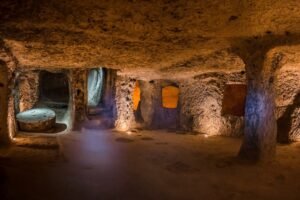
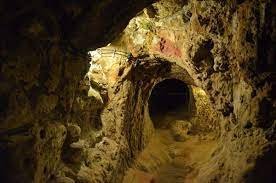
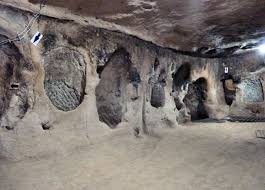
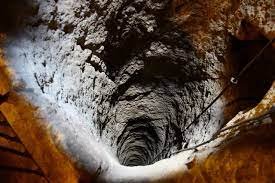
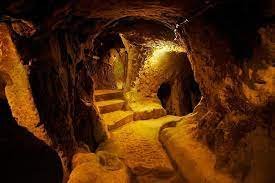
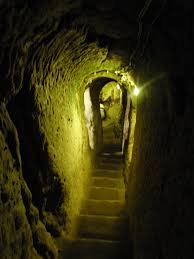

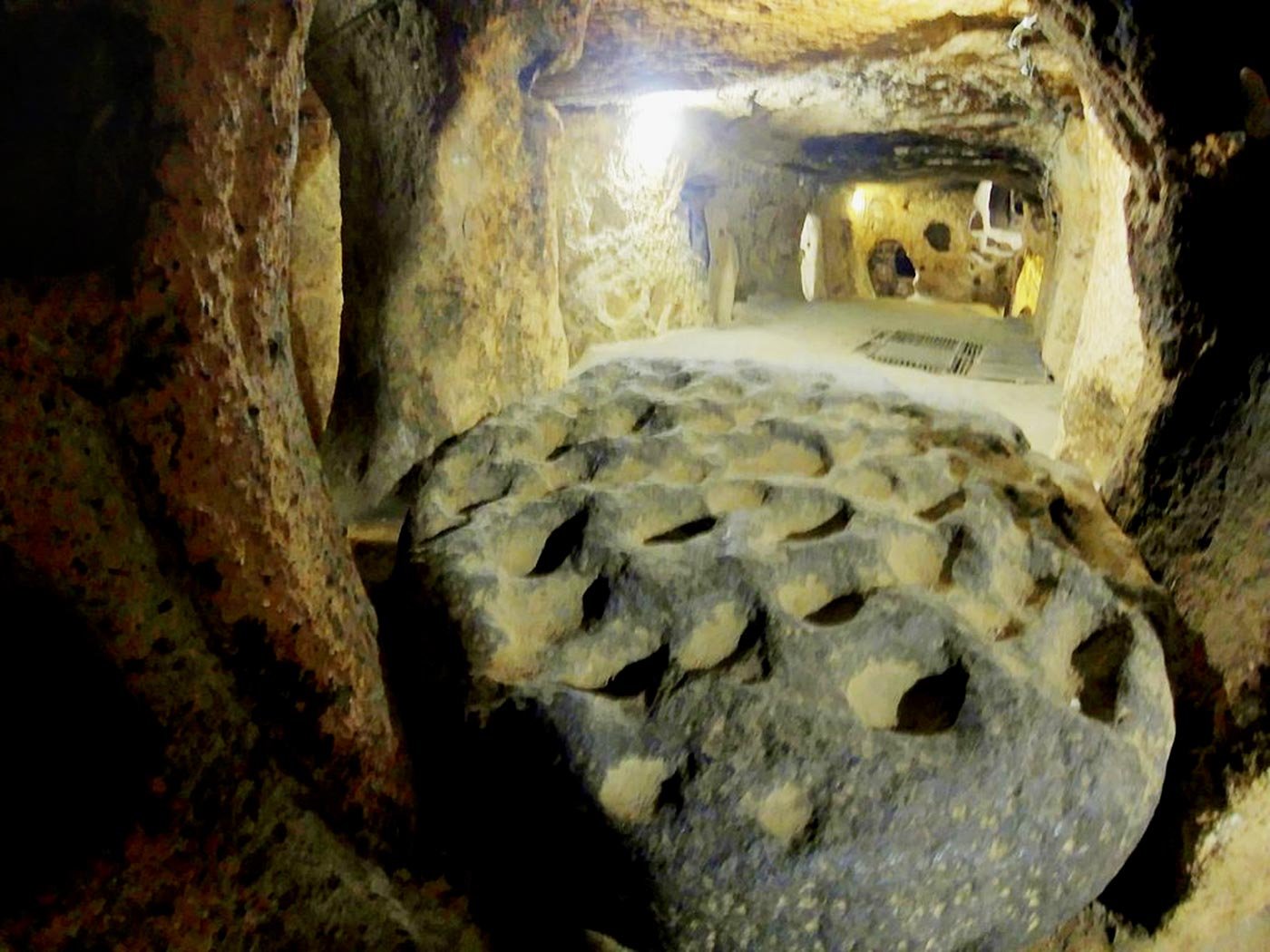
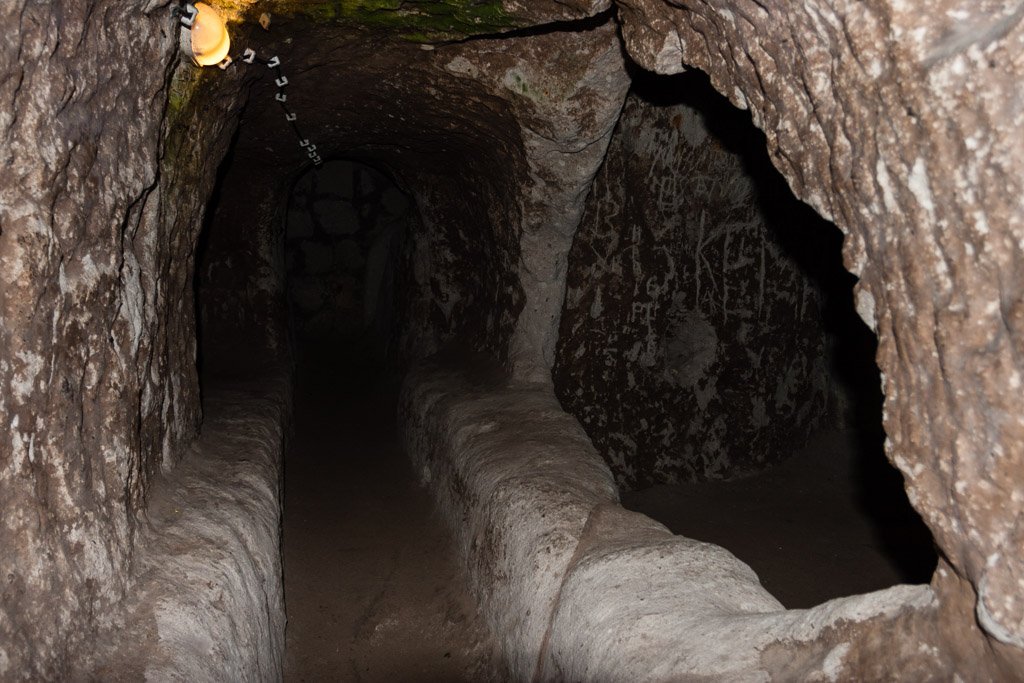
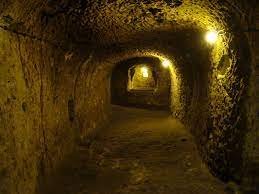
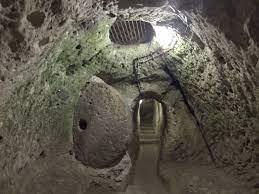
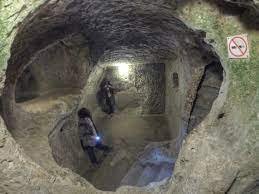
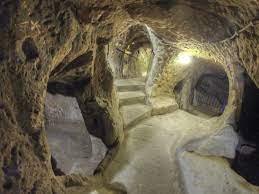
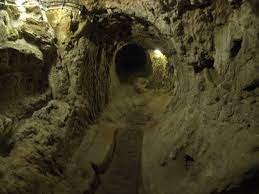
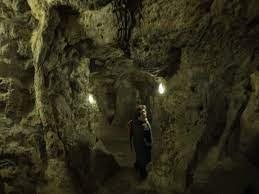
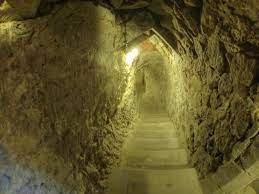
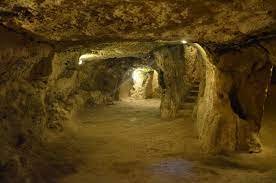
There isn't much unambiguous information on Derinkuyu's origins in the historical record. The oldest portion of the complex may have been excavated around 2000 BC by the Hittites, who were in control of the area at the time, or maybe around 700 BC by the Phrygians. Some assert that the city was constructed in the early centuries AD by local Christians.
Whoever they were, they were very skilled; while cave-ins are a significant risk, the soft rock makes tunneling very simple. Hence, substantial support pillars are required. At Derinkuyu, no floor has ever fallen in.
About the underground facility, we can be more convinced of two things. As evidenced, for instance, by the rolling stones used to seal the city from the inside, the major goal of the colossal effort must have been to hide from invading troops. Second, the complex's latest extensions and modifications, which are clearly Christian in nature, date from the sixth to the tenth centuries AD.
The city was ventilated by a total of more than 15,000 shafts, the majority of which were around 10 cm broad and extended into the first and second floors of the city when it was cut off from the world above. This made sure there was enough airflow all the way to the eighth level.
Living and sleeping areas were located on the top levels, which makes sense given that they had the optimum ventilation. The bottom levels had a dungeon as well as being primarily utilized for storage.
There were areas in between that were used for a variety of things, including a wine press, domestic animals, a monastery, and minor churches. The cruciform church on the seventh level is the most well-known.
A topographic map of Ocomtún and (inset) an artifact from the site. The ancient settlement was discovered in the jungles of southern Mexico. INAH
Pyramid-filled Ancient Maya City Hidden in the Jungle was Found with LiDAR Technology
A lost Maya city was found by archaeologists in the southern Mexican jungle. According to a statement from the Mexico National Institute of Anthropology and History (INAH), the site is situated in the Balamkú natural reserve in the state of Campeche's central region.
Archaeologists believe that the location, which has a number of substantial pyramidal buildings, was a significant center in the area during the Classic period of the Maya civilization (about 250–1,000 A.D.).
Up until the time of Spanish colonization, the Maya civilization ruled over what is now southeast Mexico, Guatemala, Belize, and the western regions of El Salvador and Honduras for more than 3,000 years.
They are known for their spectacular architecture and artwork, as well as their sophisticated calendar, mathematics, and astronomical system. They also devised the only fully developed writing system in pre-Columbian America.
Ivan Prajc's group of archaeologists made the most recent find at the "monumental" Maya site at Balamkú.
Because of the numerous cylindrical stone columns that are sprinkled all throughout the prehistoric settlement, the study team has given the location the name "Ocomtn," which means "stone column" in the Yucatec Maya language. The columns probably served as entrances to the upper rooms of the city's structures.
The site was found as a result of an INAH-approved research initiative that sought to learn more about a vast, mainly unexplored region in the state of Campeche that was essentially unknown to archaeologists.
Researchers employed LiDAR technology and aerial surveys to identify many pre-Hispanic structures as part of their research in this region.
LiDAR uses equipment mounted on aircraft that fires laser light pulses at the ground at a rate of hundreds of thousands per second. The information gathered is then utilized to produce intricate 3D maps that depict the topography of the area and any previously hidden features created by ancient humans.
Archaeologists also carried out fieldwork, traveling nearly 40 miles through dense vegetation to get to the location.
According to Prajc, investigators discovered three plazas in the southeast corner of the site that were dominated by massive structures. There is a complex made up of different low, elongated buildings that are grouped practically in concentric circles between the two main plazas. A ball court that was used for pre-Hispanic ball activities was also found by researchers.
Archaeologists estimate the height of one pyramid, which is situated in the northern portion of the site, to be about 82 feet (25 meters), while others can reach heights of up to 50 feet (15 meters).
The site's location on a "peninsula" of high ground, encircled by vast wetlands, ended up being the biggest surprise. Its imposing core is more than 50 hectares in size and is home to a number of big buildings, including numerous 15-meter-tall pyramidal constructions.
Maybe throughout the classical era, the location operated as a significant regional center.
Architectural remains at the site suggest that the village experienced a fall during the Terminal Classic period (800–1,000 A.D.), a turbulent time for Maya civilization.
This data shows how ideologies and populations changed throughout times of crisis, which ultimately resulted in the breakdown of the intricate sociopolitical structure and a sharp fall in population in the Maya Central Lowlands by the 10th century.
53-million-years-old bat skeletons provide new insight into early mammalian species
Age-old bat skeletons, which are thought to have existed 53 million years ago, provide new insight into early mammalian flight and show a newly identified species.
Two of the oldest bat fossils are described in a new study that was just published in PLOS ONE and may help researchers understand how these flying mammals spread all over the world.
The roughly 1.5-inch-long bat skeletons were discovered in a fossil deposit close to Kemmerer, Wyoming. They were discovered in a fossil-rich geologic deposit of prehistoric marshes and lakes from the Eocene period, which lasted for about 50 million years. The region, known as the Green River Formation, includes portions of Wyoming, Utah, and Colorado. Researchers estimate the age of the fossilized bats to be roughly 53 million years old, making them the oldest bat fossils ever found. This estimate is based on the age of the sediment layers that surround the fossils. During this time, it is considered that bats initially diverged from non-flying mammals.
Fig 1. Skeleton of Holotype of Icaronycteris gunnelli (FM.145747A) A) Dorsal view; B) Counterpart (FM.145747B).
The bones were then compared to those of other species, leading paleontologists to the conclusion that they belonged to the extinct Icaronycteris genus of bats. The newly discovered bats differed from other Eocene bats in a number of ways, including the existence of claws on the first and second digits of the wings, relatively short forearms, and large wings. It was named Icaronycteris gunnelli, after the late Duke University paleontologist Gregg Gunnell, who made significant contributions to the study of bat evolution, by the researchers.
RIETBERGEN ET AL., PLOS ONE, DOI: 10.1371/JOURNAL.PONE.0283505 (2023)
Bats are a diverse group of mammals with over 1,400 living species worldwide. They play a vital role in healthy natural ecosystems and provide essential ecosystem services for human economies. Bats are the only mammals capable of true powered flight, an adaptation that evolved early in the chiropteran lineage. Early bat records date back to the early Eocene, with bats found in North America, Europe, Africa, Asia, and Australasia. The fossil record of early bat evolution is relatively poorly understood, with most skeletons consisting of isolated teeth.
The oldest known articulated bat skeletons come from mid-shore deposits of the Green River Formation in southwestern Wyoming. Two fossil bat species have been described from the Fossil Lake Sediments, but no other species have been described from other lakes. The high taxonomic and functional diversity of living bat faunas today suggests that the area and habitats reflected in the Green River Formation hosted more bat species than previously discovered.
Spartan Code: Rules for Life - The Philosophy of Sparta
These are the greatest quotes and Code for the inner Warrior mindset, inspired by Sparta. The Spartans stood at the center of the Spartan state, where citizens trained in the disciplines and honor of a warrior society. Watch the video for more!
15 Shocking Things Recently Discovered in Australia
Did you know that 80% of the animals in Australia are unique to Australia and you won’t be able to find them anywhere else? Australia is definitely a world of its own and is home to some of the weirdest and craziest feats of nature. Thing is, we are still learning about this amazing place and the locals are still discovering things we’ve never seen before. Here are 15 shocking things recently discovered in Australia.
Dragon Blood Tree: These centuries-old trees ‘bleed’
The first call to prayer of the day is broadcast over a loudspeaker shortly after 4 a.m. on the Diksam plateau, which is located close to Socotra Island in Yemen. One of the island's most recognizable and exotic species—a peculiar, upside-down tree known as the dragon's blood (Dracaena cinnabari)—is visible from the plateau, where a heavy fog is drifting, and a breeze rustles half a dozen green and blue nylon tents housing American and European tourists.
A tiny group of structures that make up the settlement, the campground, and, to the west, a single paved road that winds its way past the angular Hajhir mountains toward the northern coast are illuminated as the fog dissipates with the rising light.
The village is bustling with activity by 6 am. Mohammed Salem Abdullah Masoud, also known as Keabanni, the proprietor of the campground, is seated on a foam mattress in a clearing. His oldest son, a tour guide and conservationist named Salem Mohammed Salem Abdullah, is also present. Both people have breakfast of tea, dates, and a pancake-like bread called malawah spread with soft white cheese and honey while sitting cross-legged and donning sandals, T-shirts, and traditional skirt-like clothing known as foutas. The extraordinary dragon's blood tree, which only grows on the island's highlands and high plateaux, is being discussed by Keabanni, a man in his mid-fifties. He speaks to me in Socotri, and Salem translates. "The dragon's blood tree is the heart of Socotra," he says.
The rapacious eating habits of Socotra’s goat population are thought to have contributed to the decline of the dragon’s blood tree. Photograph: Jess Craig
As a young boy, Keabanni heard tales from his great-grandparents of enormous forests filled with dragon's blood trees. They claimed that there were so many trees on the plateau that you could stroll from one tree's shelter to another without ever feeling the sun on your skin. They were nomadic pastoralists, just like his parents and grandparents, traveling from place to place to feed and water their cattle. According to Keabanni, "It was the Bedu lifestyle," alluding to the Bedouin ethnic group that is widespread throughout the Middle East and north Africa.
Families pitched their tents under the trees at night, and during the day the umbrella-shaped crowns of stiff, tightly packed leaves offered shade from the harsh noon sun on the island. The vivid red resin that leaks from the dragon's blood trunk when it is cut was ground into a fine powder and sold to Greek, Arab, and Indian traders who shipped it around the world where it was used in paint and pottery glaze, makeup, and nail polish, as well as as an ointment for cuts and scrapes and as an elixir to treat everything from diarrhea to postpartum bleeding.
But in recent decades, the strains of a changing climate and human activities have taken a toll. According to some biologists, the dragon's blood tree will likely see a sharp drop during the next 30 to 80 years and may eventually disappear entirely. According to Petr Madra, a professor of forest botany at Mendel University in the Czech Republic, "the long-term future of this species is not hopeful."
The dragon’s blood tree is classified as a vulnerable species on the IUCN red list. Photograph: Neil Lucas
But Keabanni isn't going down without a struggle over the trees. His Diksam campground, which includes a nursery and an unofficial research center, has operated as a type of dragon blood conservation headquarters for the past 20 years.
On the way to Firmhin, a plateau north of Diksam where there are still many dragon's blood trees, the first dragon's blood tree that can be seen is a lone tree on a patch of arid, rocky terrain that is a few feet off the gravel road. The tree is around 15 feet tall and has a scarred, thick, ash-white trunk that is kinked in the middle. The thick, scaly branches that grow from the top of the trunk end in a crown of long, thin leaves that resembles a bluegrass lawn that has recently received water.
Dragon's blood trees have the ability to do the opposite, getting water from the air and transferring it into the soil, as opposed to most trees that draw water from the soil and up their roots to the leaves. According to scientists, the dragon's blood tree's distinctive structure is an adaptation to live in its dry environment that enables the trees to absorb moisture from fog and clouds, a technique known as horizontal precipitation capture. Each dragon's blood tree is thought to be able to add several times as much water to the soil as the area's rainfall, which is a vital part of the island's hydrological system.
Crushed resin from the dragon’s blood tree has long been used in pottery, paint and medicine. Photograph: Jess Craig
"One dragon's blood tree brings a huge amount of water into the system," claims Kay Van Damme, a researcher from Europe who works on the island since the late 1990s and is also the chair of the UK-based volunteer organization Friends of Socotra. Van Damme is a professor at Mendel University and Ghent University in Belgium. "If you lose a tree, you also lose hundreds of litres of water each year that would otherwise go into the system," the man claims.
The dragon's blood tree, which supports dozens of other plant and animal species, including geckos, snakes, and floral plants, is referred to as a "umbrella species"—not because of its shape but rather because of the ecological role it plays. A study by one team of scientists found 92 plant species overall, 32 of which, including seven indigenous species, were discovered to grow only close to dragon's blood trees. This study contrasted the plants found living in the understory of a dragon's blood tree to those found in open areas.
As you continue driving, you'll see more trees. The Firmhin plateau is then visible over a wide gorge. The rocky landscape is covered in thousands of dragon's blood trees.
The leafless crown of a toppled dragon’s blood tree in the Firmhin forest. Photograph: Jess Craig
However, for every dozen or so healthy trees, there are dozens nearby that have fallen, their white trunks split down the middle, their enormous crowns overturned, and their white, leafless branches sticking out of the ground like bones.
The name "the blood of the two brothers" or "Dam al-Akhawain," which translates from Arabic as "the blood of the dragon's blood tree," Folklore holds that the first dragon's blood tree blossomed where Darsa and Samha, two brothers, battled to the death. According to a different myth, the trees sprang from the blood that a dragon drained while battling an elephant. The Firmhin plateau is currently made up of a cemetery made of dragon's blood and a forest.
According to biologists, the dragon's blood tree is on the verge of extinction due to two important aspects. One is the current climate problem. The tropical desert climate of Socotra has always been harsh, but in recent years, fewer rainy seasons have resulted in extended and severe droughts. As a result, there is less moisture in the soil, which makes it difficult for seedlings to survive.
In recent years, Socotra has experienced severe winds and flooding brought on by extreme and unpredictable weather systems that are likely fueled by rising waters. About 30% of Socotra's trees were destroyed in one week in 2015 when two cyclones struck the island.
Salem Mohammed Salem Abdullah, a tour guide and local conservationist, walks around the dragon’s blood nursery that he cares for with his father. Photograph: Jess Craig
Another important reason in the demise of the trees is overgrazing. According to Maděra, there are four goats for every person on the island, and they consume anything that gets in their way, including the saplings of dragon's blood trees.
The majority of dragon's blood trees found in the wild today are probably hundreds of years old, though it is impossible to determine their exact age because they lack trunk rings. However, the current generation might be the last if there isn't a younger one to take their place.
The largest of the four islands in the Socotra archipelago, Socotra spans 1,400 square miles and is located about 210 miles off the southern coast of Yemen. The archipelago, also known as the "Galápagos of the Indian Ocean," is one of the most biodiverse regions on earth. 95% of the island's land snails, 90% of its reptiles, and 37% of its 825 plant species are thought to be endemic, which means they can only be found on the island. The Socotra archipelago was designated a natural world heritage site by Unesco in 2008.
Salem rests his hand on the scarred trunk of a dragon’s blood tree. Photograph: Jess Craig
Socotra, which is situated between the Arabian Sea and the Indian Ocean, has hosted or been occupied by Russian, Portuguese, and British soldiers; their rusty tanks still border the northern coastline of the island. But those occupations came and went, and the British finally ceded colonial authority of the southern half of what is now the Republic of Yemen in 1967, the same year Keabanni was born in a mountain cave about ten minutes from Diksam. Socotra was practically difficult to visit until the late 1990s, when southern and northern Yemen were reunited and the current state was founded. At that time, Socotra was acquired by the new Yemeni government as a fortified military zone, preventing travel to and from the island.
Van Damme thinks that these limitations, together with the nomadic pastoralist culture of Socotra, which encourages a tight bond between the people and their environment, contributed to the ecosystem's generally successful preservation. "For this reason, Socotra is particularly special. What you see today is how many islands would have appeared 300 or 400 years ago, when there was still time to protect them, the author claims.
However, the island is evolving. Following reunification, the Yemeni government started modernizing the island's infrastructure with help from international relief organizations and other nations. When the island was made accessible to outsiders, a surge of modernization and urbanization, as well as scientific inquiry and conservation, arrived.
Today, no area of the island's capital is undeveloped due to ongoing development and the infusion of foreign currency. Neither Diksam nor the Firmhin plateau have been spared by the development.
The International Union for Conservation of Nature (IUCN) and the UN Environment World Conservation Monitoring Centre currently list 157 plant species on Socotra as vulnerable, endangered, or severely endangered. The IUCN lists the dragon's blood tree as a vulnerable species among these.
As part of a species monitoring effort, Salem is collaborating with the Mendel University research team to identify and quantify each dragon's blood tree on the island. He opens a phone app and checks to see if the tree has been logged when he comes across one. If not, he gathers the tree's GPS coordinates, counts the circumference of the trunk, calculates its height, and records pertinent information like the presence of pests or signs of branch-cutting or resin harvesting. Researchers should have a thorough baseline for each dragon's blood tree on the island after the study is finished in a few years.
The nursery, where Keabanni and Salem have been producing dragon's blood saplings for the past 20 years, is located just a few steps from the Diksam campground. The saplings stand knee-high in rows that are a few feet apart behind a six-foot stone wall. They are now about 20 years old and resemble prickly bushes more than trees; they are large enough to catch horizontal precipitation but too little to escape goat attack. Keabanni searches for goat intrusions every several days.
In the early 2000s, Maděra and Van Damme first met Keabanni, and Madra says that they immediately noticed that "he was a man who [knew] every tree on the island, every species." From the start, the scientists intended to involve the local population in the conservation efforts. According to Van Damme, "local ownership is the only way conservation can succeed." "Because they live there, they are the experts in knowing how to take care of their land, their animals, and their plants."
The trees still thrive in some places on Socotra, but for how much longer remains to be seen. Photograph: Sylvain Cordier
A total of 800 seedlings were planted by Van Damme, Maděra, and Keabanni. While Keabanni took care of the saplings, the Mendel team offered the first scientific knowledge, technical help, equipment, and finance.
Even though the saplings no longer need daily watering, Keabanni still comes by to keep an eye out for the goats, who are still a constant threat. He calculates that throughout the years, the animals have consumed around 200 seedlings, and that nearly all 600 of the remaining plants have had their ends gnawed off.
The dragon's blood trees will be transplanted into the wild once the saplings have reached a sufficient height. However, dragon's blood trees grow extremely slowly, only 2.65 cm in five years.
Keabanni is aware that it's unlikely he'll ever reap the rewards of his labor. But perhaps in Diksam, his grandkids will once more witness a dragon's blood forest.
Hidden Civilization of Inner Earth Suddenly Found In Antarctica
In the following video we will be talking about a hidden civilization of inner earth that was suddenly found in Antarctica. Watch the video to find out more!
Scary Ocean Mysteries Uncovered By Fishermen
Dive into the unknown with Scary Ocean Mysteries Uncovered By Fishermen! Today, we reveal the most chilling and unexplained discoveries made by fishermen from around the world. From ghostly shipwrecks to bizarre sea creatures, these tales will leave you questioning what lies beneath the waves. Don't forget to like, comment, and subscribe for more spine-chilling content!



